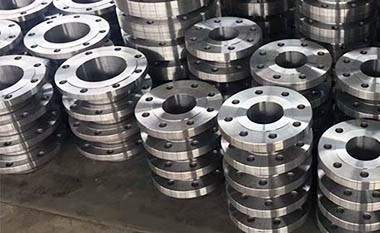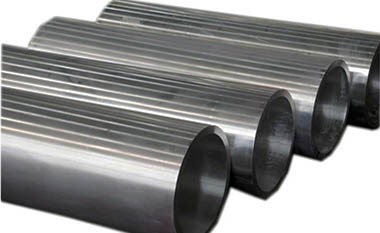6061 t6 forged aluminum
After forging, 6061-T6 can achieve better mechanical properties because the arrangement of the grain structure enhances strength and toughness. 6061-T6 forged aluminum is a versatile high-performance material suitable for various demanding applications.
6061-T6 aluminum is a widely used alloy known for its outstanding mechanical properties and corrosion resistance. One of the most commonly forged aluminum alloys is the 6061 alloy, which is a prevalent alloy in the 6000 series.
HC Aluminum is capable of providing the highest quality forged 6061 aluminum products and offers various heat treatment options to customize material solutions according to your needs.
Key Characteristics of 6061-T6 Forged Aluminum
- 1. Strength: 6061-T6 has good tensile strength, significantly improved by the T6 heat treatment process compared to its untreated form.
- 2. Corrosion Resistance: This alloy exhibits good corrosion resistance, making it suitable for various environments, including marine applications.
- 3. Machinability: 6061-T6 is well-known for its excellent machinability, allowing it to be easily shaped into complex forms and components.
- 4. Weldability: 6061 alloy can be welded using various methods, but it is recommended to use filler materials compatible with the alloy to maintain its strength.
Why Should 6061 Forged Aluminum Parts Undergo T6 Heat Treatment?
T6 tempering treatment provides maximum precipitation hardening (and thus the highest yield strength) for forged 6061 aluminum parts.
T6 heat treatment process
T6 heat treatment includes two main steps:
- Solution Treatment: Heating the aluminum parts to a specific temperature (typically around 500°C) to fully dissolve alloying elements such as magnesium and silicon into the aluminum matrix.
- Aging Treatment: After rapid cooling, the aluminum parts are placed in a low-temperature environment (generally 150-200°C) for aging treatment to promote precipitation hardening of the alloying elements.
Advantages of T6 Heat Treatment for 6061 Forged Aluminum Parts
1. Maximized Strength
T6 heat treatment significantly improves the mechanical properties of 6061 aluminum alloy, especially yield strength and tensile strength. After T6 treatment, the yield strength of 6061 parts can reach 240 MPa (35 ksi), with ultimate tensile strength of at least 290 MPa (42 ksi), and more typical values of 310 MPa (45 ksi) and 270 MPa (39 ksi).
2. Enhanced Corrosion Resistance
T6-treated 6061 aluminum alloy exhibits better corrosion resistance, which is crucial for applications in aerospace and marine environments.
3. Good Machinability
Although 6061 aluminum alloy has higher strength in T6 condition, it still maintains a certain level of machinability, allowing for subsequent processing and shaping.
4. Excellent Toughness
The 6061 aluminum alloy in T6 condition has a high elongation rate, typically at least 8% at thicknesses of 6.35 mm (0.250 in) or less, and can reach up to 10% in thicker sections. This means that when subjected to external forces, the aluminum parts can deform without experiencing brittle fracture, thereby enhancing the material's toughness and impact resistance.
5. Adaptability to Various Applications
Due to its good strength and toughness, T6-treated 6061 aluminum alloy is widely used in the manufacture of aerospace structural components, vehicle frames, and mechanical parts, especially in fields requiring high strength and low weight.
Machinability of 6061 T6 Forged Aluminum Parts
"Machinability" refers to the ease of processing metals into acceptable surface finishes. After forging and heat treatment, 6061-T6 forged aluminum parts typically undergo machining to achieve tighter tolerances or higher surface finishes.
Three factors affect the machinability of 6061-T6 aluminum forgings.
| Factors | Details | Impact |
| Machining Process | 1. Type of equipment 2. Cutting tool selection 3. Cutting speed and feed rate 4. Use of lubricants | Directly affects machining efficiency and surface finish. Cutting speed and feed rate need to be optimized to avoid overheating and tool wear. Proper lubrication can reduce friction and improve surface quality. |
| Material Properties | 1. Composition control 2. Forging defects (e.g., porosity, cracks) | Composition must meet standards; defects can significantly reduce machinability. Defects may lead to greater cutting forces and faster tool wear. |
| Material Processing | 1. Alloy chemical composition 2. Heat treatment process 3. Forging process control (compression ratio and die design) 4. Selection of direct and indirect presses | Affects the microstructure of the material, thus influencing machinability. Control of the forging process and die design will affect forming effectiveness and the ease of subsequent machining. |
Chemical composition of 6061 aluminum forgings
| Element | AMS 4127 Requirements (wt. %) |
| Si | 0.4-0.8 |
| Fe | 0.7 max |
| Cu | 0.15 max |
| Mn | 0.15 max |
| Mg | 0.8-1.2 |
| Cr | 0.04 max |
| Zn | 0.25 max |
| Ti | 0.15 max |
| Al | balance |
| Other | 0.05 max |
Mechanical properties for 6061 aluminium forgings
| Property | T6 | T451 | T4 |
| Tensile strength | 310 MPa | 310 MPa | 241 MPa |
| Yield strength | 275 MPa | 275 MPa | 152 MPa |
| Elongation at break | 12% | 17% | 25% |
| Hardness, brinell | 95 HB | 95 HB | 65 HB |
| Modulus of elasticity | 68.9 GPa | 68.9 GPa | 68.9 GPa |
Applications of Forged 6061 Aluminum Alloy
1. Aerospace
6061 aluminum alloy is primarily used in the aerospace sector for manufacturing aircraft structural components. Due to its lightweight and high strength, 6061 aluminum alloy is suitable for the frame structures of smaller aircraft and is also commonly used for repairs and replacements of small parts. This alloy can withstand high-stress levels and maintains good mechanical properties even at elevated temperatures.
2. Automotive and Motorcycles
In the manufacturing of automobiles and motorcycles, 6061 aluminum alloy is used to create frames, suspension systems, and other structural components. Its excellent weldability and machinability make it an ideal choice for lightweight designs. By reducing the weight of the vehicle body, 6061 aluminum alloy can improve fuel efficiency and handling performance.
3. Bicycles
6061 aluminum alloy is widely used in bicycle frames and chains. Its strength and lightweight characteristics enhance the bike's agility and efficiency during riding. Additionally, the corrosion resistance of 6061 aluminum alloy makes bicycles more durable in various environments.
4. Sports Equipment
In sports equipment, 6061 aluminum alloy is used to manufacture fly fishing reels, frames of sports gear, and more. Its lightweight and sturdy characteristics improve the performance and lifespan of the sports equipment.
5. Firearm Components
6061 aluminum alloy also has significant applications in firearm manufacturing, particularly for parts like stocks, suppressor housings, and rifle receivers. Due to its machinability, manufacturers can design lightweight yet robust firearm components, enhancing the shooting experience.
6. Marine and Water Sports
In shipbuilding, 6061 aluminum alloy is commonly used for components such as ladders and dock boards. Its corrosion resistance allows 6061 aluminum alloy to perform excellently in marine environments, capable of withstanding saltwater corrosion.
7. Industrial Applications
6061 aluminum alloy is also widely used in industrial equipment and structures, such as vacuum chambers, radio antennas, rescue ladders, and flashlights. Its excellent mechanical properties and corrosion resistance make it crucial in various industrial applications.


